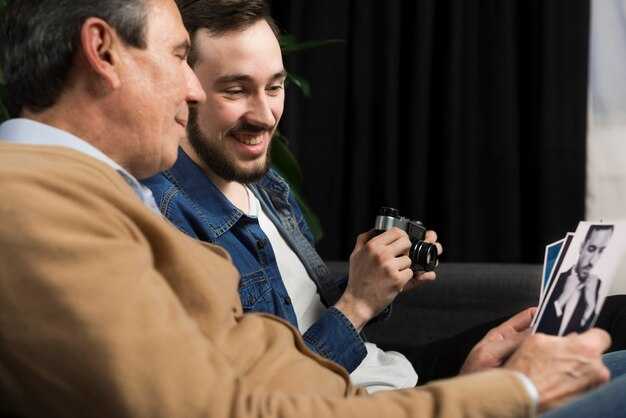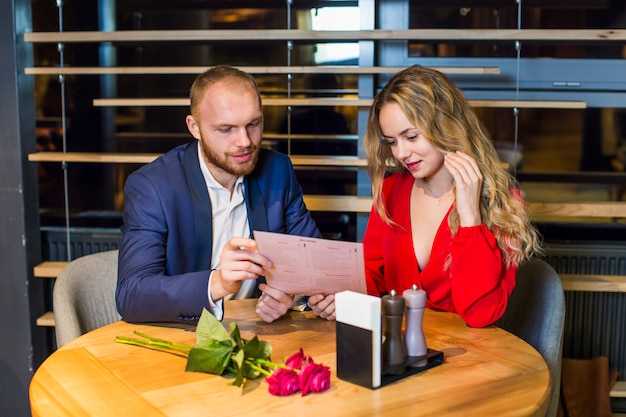Start attending partner-oriented volunteer groups that run monthly fundraising events; attend 2–3 per month to prioritize offline, values-aligned interactions and the immediate benefit of meeting older, steady people.
Join a book club of 8–12 members – pick genres that attract your target partner, sit in a visible spot near the front and initiate short chat during breaks; maybe bring a friend the first time to ease nerves, use a funny, low-risk anecdote to open talking, and if someone doesnt respond, pivot to someone else; either start a club yourself or request to join an established one.
Rotate between simple skill-based activities such as cooking, photography or language classes where attendance is measurable: aim for three sessions, exchange contacts with two people, follow up within 48 hours – this means actively making plans rather than passive waiting; endless niche groups exist, so narrow search filters for finding partner-oriented options that match your schedule and values.
Balance offline interactions with targeted chat only as a follow-up; make intentions visible in profiles and first messages, book one in-person coffee within 72 hours of a positive exchange, and keep invites specific and short; mention your preferred follow-up method (phone or text) to reduce ambiguity and increase conversion to real meetings.
Gym: How to Start Conversations Without Interrupting Workouts
Ask one specific, gym-related question during a rest set and keep the exchange under 60 seconds – aim for 20–40 seconds; this minimizes interruption and signals respect for training time.
- Timing: approach during a rest interval of at least 30 seconds or between exercises (not mid-rep); avoid cardio machines in active use.
- Proximity: stand to the side, not in front; keep one arm’s length and an open stance so you’re not blocking equipment.
- Voice and tone: lower-volume, conversational tone; reduce background noise by stepping toward a quieter zone.
Suggested one-line openers (use only one):
- “Quick form question: does this foot position feel right for deadlifts?” – 20–30 seconds.
- “Which plate progression did you use for that set?” – good when you both use similar equipment.
- “Was your coach at the last class the one that suggested that tempo?” – works after group sessions or workshops.
Micro-rules to follow:
- Keep eye contact brief and smile once; if they return the gesture, continue; if they dont, finish your set and move on.
- If the person gives one-word answers or seems rushed, consider that the interaction wasnt welcomed and step back immediately.
- Limit advice or corrections unless asked; offer one specific tip only and avoid long explanations.
Simple scripts to transition offline or later:
- “This was useful – want to compare programs offline sometime? I can share the routine I follow.” (exchange contact only if reciprocated)
- “There’s a strength workshop here next week; people usually stick around after for coffee. Interested?”
Dos and don’ts with concrete examples:
- Do: reference a shared context (class, machine, instructor name).
- Do: offer a short, practical compliment – “Nice pacing on those sets” – rather than a personal comment.
- Don’t: mention relationship status, weddings or nights out in a first-minute chat; those topics escalate too quickly.
- Don’t: block walkways, film, or touch equipment without permission.
Useable cues and follow-up plan:
- If they ask questions about your jobs or pursuits, respond with one-line summaries and pivot back to training to keep the session brief.
- If the exchange felt good, suggest a neutral, public next step: “There’s a charity 5K and a museums run this month – want details later?”
- If the response was the worst-case silence, accept it and return to your set; consistent respectful behavior increases long-term opportunities together.
Brief anecdote: lucy asked one program question between sets, kept the chat to 35 seconds, and later traded workshop notes; that sequence boosted shared happiness and led to occasional joint pursuits at evening classes.
Final checklist before you approach:
- Is the person between sets or leaving? If yes, proceed.
- Can you make the interaction under 60 seconds? If no, dont start.
- Have a single specific question or offer ready; mention only one follow-up option if interest appears.
Choose times and zones where people are open to chat
Target weekday evenings 18:00–21:30 at neighborhood centers and cafés for specific classes and light social activities; Tuesday and Thursday nights yield the highest ratio of responsive conversations per hour.
- Early mornings (07:00–09:00): informal runs, farmers markets and coffee shop queues – many participants are short on time but open to quick introductions; aim for Saturdays when markets were at least 30 guests.
- Lunch hours (12:00–14:00): university seminars, pop-up talks and community lunches hosted by churches – these activities provide structured openings and follow-up opportunities.
- Evenings (18:00–21:30): hobby classes, language classes and small gallery openings – these classes attract people prepared to exchange ideas and contact details.
- Weekend afternoons: volunteer shifts, charity giving events, weddings and shop launch events – giving-focused events and weddings include guests who expect social interaction and mutual support.
- Late-night options (21:30–23:00): low-key quiz nights and small live-lecture Q&A sessions – quieter zones where others are having relaxed conversations.
- Arrive 10–15 minutes early to secure a conversational zone and collect a little contextual info (name of organizer, agenda point) to reference later.
- Choose events in terms of attendee count: pick gatherings with 20–80 people – large enough for variety, small enough to be noticed.
- If you cant stay long, state that upfront and offer a follow-up method; short honesty increases trust more than forced lingering.
- Use one specific opening tied to the activity: ask about a class exercise, a tool in a shop, or something a speaker said – such prompts are more helpful than generic lines.
- Follow up within 48 hours referencing this event detail and any mutual interest; offering small support or a resource increases response rate.
Fact: people involved in giving and volunteer activities report higher levels of happiness and openness; having a purpose makes casual connection easier. For finding other opportunities, scan community boards, local newsletters and friends-of-friends; a little tracking of events per week – just 2–3 targeted outings – raises your odds. Prioritize venues where society norms encourage conversation (churches, classes, workshops) and avoid crowded spots where guests were rushing through.
Use approachable body language and quick nonverbal cues
Smile within 1–2 seconds of making eye contact; hold a genuine smile for 1.5–3 seconds then relax–this signals warmth without intensity. Maintain eye contact for 2–4 seconds, look away for 3–5 seconds, and repeat; that rhythm increases the chances someone will approach.
Stand with your torso angled about 20–30° toward the person you want to engage; uncross arms, keep hands visible at waist level, and lower your shoulders by 1–2 cm to look less tense. Use mirroring sparingly: match tempo and posture within the first 30–60 seconds of a conversation to build rapport without copying.
Use quick nonverbal cues: an eyebrow flash (single raised eyebrow for 0.2–0.5s), a slight head tilt (10–15°), and a single nod are clear invitations to talk. For brief contact, touch the forearm for 0.5–1.5s–pressures light, fingers relaxed–to signal friendliness; avoid repeated touching.
At social gatherings–friends get-togethers, singles nights or cookery classes–position yourself at the edge of groups so youre visible but not intrusive. Face the group’s center 60–80% of the time and scan each person for 1–2 seconds to gauge openness; those who return eye contact and smile are most likely to respond to a direct approach.
When you want to prompt a reply, use a soft open-hand gesture and pause after a one-line opener; wait 1.5–3 seconds for an answer. If theres no reciprocation after two attempts, step back–this doesnt indicate failure, it conserves your energy for better chances elsewhere.
Practice these cues in low-stakes environments: roleplay with friends, attend a cookery course or language classes, and join improv or fitness classes to rehearse timing. Track outcomes for a month and note which types of signals increase actual conversations; small adjustments will improve your success in future pursuits.
People pursue connection for many reasons–companionship, shared interests, or curiosity–so calibrate signals per context: older attendees at a class may prefer slower eye contact, while younger singles on busy nights respond faster. Knowing these differences will raise your potential for genuine interaction and, ultimately, happiness together.
Three gym-friendly openers that won’t sound forced

“Quick form check?” – Approach between sets at a rack or bench when they’re resting; say one clear sentence and demonstrate the tweak you mean. Mention the exact cue you noticed (knees, hips, back) and whether it’s a safety issue or efficiency tweak. Keep it short: 8–12 seconds of observation, then ask if they want another tip. If they cant accept feedback say thanks and move on; lots of people enjoyed a single helpful pointer and come back later to chat.
“Which playlist is that?” – Use at the water fountain or treadmill row where headphones are visible; name a specific track you actually heard and offer a quick opinion (“that beat keeps tempo for running or dancing”). Follow-up options: if they like the artist, suggest a local class or an online playlist you thought useful and ask if they explore similar classes. This opens a neutral exchange and lets you assess mood and times they train.
“Want a spot for the next set?” – Say this when weights are loaded and you’re ready to help; clearly state what you can do and what you cant (spot, count reps, call form). In terms of tone, smile, keep hands relaxed, and offer the simplest help first. If they decline dont push; if they accept, make one small correction, then step back. That one supportive thing can turn a gym interaction into a brief conversation about routines, local classes, training goals, or future sessions – verily a low-pressure way to see whether theyre open to talk more or exchange contact details with another friendly mate.
Move from a short conversation to suggesting a coffee

Use this exact line within 3–7 minutes of a good rapport: “I enjoy talking with you – coffee this week?” then immediately offer two specific slots and a location to avoid the same vague invite.
Read instant signals before asking: eye contact longer than three seconds, reciprocal questions, laughter, and leaning in. Most people who are interested will ask a related question within the first minute; if they asked nothing back, wait for a second positive cue before proposing a meet.
Context-specific scripts: after classes say, “Coffee after class tomorrow at 10? Twenty minutes at the campus café.” After salsa practice: “I’m having coffee near the studio after practice – care to join?” At conferences: “Short coffee between sessions, 15–20 minutes at the lobby café?” In a store aisle: “Quick coffee across the street while we compare choices?” Start small (20–30 minutes) and make the meeting low-commitment.
When the answer is hesitant, offer a low-effort alternative: a specific time, a single-meeting phrasing, or a shared activity related to your convo. Give every person two options; a second choice raises the yes rate. If they decline, note common reasons (schedule, partner, travel) and move on without pressure.
Practical tips: text confirmation within 15 minutes, one follow-up if no reply, don’t over-message or over-explain. Sometimes there are endless small excuses – accept a clear no. For having reciprocity, match tone and pace, make the plan concrete, and treat the invite as an ordinary ask, not a romance test or a declaration you must defend.
Sample short scripts to memorize: “I enjoy this – coffee Wednesday 10 or Thursday 5?” ; “Short coffee after class? 20 minutes at the café?” ; “Care to grab coffee between sessions?” These reduce awkwardness, make decisions instant, and keep momentum without forcing a long conversation about logistics.
Local Classes: Find Shared Interests and Meet Singles
Recommendation: Enroll in a six-week beginner salsa course that meets Tuesdays at 7:30pm at the Maple Community Center on Second Street – the second session each month averages 12–16 members, which makes it easier to have sustained conversations instead of the quick exchanges you get in bars.
Sign up online through the community center portal or Meetup; fees range $60–$120 for six weeks. Actually bring a water bottle and non-marking shoes, and arrive 10 minutes early to chat with instructors and other attendees. If you want smaller groups, pick the weekday evening or the second session of the month; weekend drop-in classes are louder and left to faster rotations.
Pick classes that create shared tasks: salsa for rhythm-based connection, a beginner golf clinic at the driving range (weeknights 6–7pm) for paired drills, creative pottery or a two-hour cooking class where partners rotate. Walking groups that include dogs generate natural conversation prompts – people talk about breeds, routes and local trails – and the walking format prevents awkward silences. Lucy found someone in a pottery workshop after a funny glaze mishap sparked a real exchange about technique and travel.
Practical advice: dont treat classes like a singles bar – aim for two quality conversations per session, not endless small talk. Openers that work: ask which technique they prefer, where they found the instructor, or whether they want a critique of a second attempt. Never ask about exes; instead ask about goals for the class in terms of skills or projects. If you want contact details, wait until after a positive second interaction and offer to bring a reference link to a local event or a photo you took – that makes swapping info feel natural. Classes produce context for a relationship because shared progress gives concrete topics for follow-up; choose meetups found online or at community boards and track attendance so you know which nights reliably attract the kind of members you prefer.
Pick class types that attract relationship-minded participants
Choose evening small-group cooking, improv play and walking courses that bring people who want quality conversation, work together on tasks and show mate-ready behavior.
| Heading | Types | Why it brings relationship-minded participants |
|---|---|---|
| Cooking | Evening cooking classes, hands-on course | Brings participants used to cooperation and steady conversation; many told surveyors they want long-term partnership; course work forces step-by-step coordination, offers chat andor structured exercises, and reveals practical skills better seen over 4–8 sessions. |
| Walking | Walking groups, country hikes, dog-friendly meetups | Brings people who value routine activity and calm conversation; dogs increase approachability and funny icebreakers; community or local hiking society attendance improves finding mates who enjoy outdoor life and could stay in contact after an evening walk. |
| Improv & play | Short improv classes, scene-work evenings | Brings people willing to be vulnerable and funny, accelerates natural conversation, and suggests emotional agility; participants who want romance often reveal compatibility through playful collaboration rather than staged chat. |
| Volunteer community | Animal shelter shifts, community garden, service classes | Brings individuals motivated by values and sustained commitment; working with dogs or in a society-focused project shows care and reliability, which many consider higher quality mate traits over years. |
Suggested action list: pick 2 complementary class types, come to at least 6 sessions, arrive 10–15 minutes early to chat, volunteer for paired tasks to show work ethic and empathy, andor ask a simple question that invites an answer about weekend interests; finding romance could take months or years but these steps increase much better odds of meeting a compatible mate.


 How to Meet Great Men – Dating Coach Reveals Top 5 Places">
How to Meet Great Men – Dating Coach Reveals Top 5 Places">

 Do You Want a Happy Marriage? 5 Actions to Build Lasting Love">
Do You Want a Happy Marriage? 5 Actions to Build Lasting Love">
 I Don’t Hate Dating Apps — I Hate Their Superficiality">
I Don’t Hate Dating Apps — I Hate Their Superficiality">
 Get Him to Approach You – 3 Simple Dating Hacks That Work">
Get Him to Approach You – 3 Simple Dating Hacks That Work">
 Are You Ready to Have Another Baby? Key Signs & Practical Tips">
Are You Ready to Have Another Baby? Key Signs & Practical Tips">
 Why Men Take Career Setbacks Harder — Causes & Coping Strategies">
Why Men Take Career Setbacks Harder — Causes & Coping Strategies">
 205 Best Questions to Get to Know Someone You’re Dating — Deep, Fun & Flirty">
205 Best Questions to Get to Know Someone You’re Dating — Deep, Fun & Flirty">
 5 Women Who Chose Career Over Love – Why They Did It">
5 Women Who Chose Career Over Love – Why They Did It">
 Center for the Study of Partisanship & Ideology — Research">
Center for the Study of Partisanship & Ideology — Research">
 Don’t Lose Your Passions While Pursuing Marriage — Keep Your Identity">
Don’t Lose Your Passions While Pursuing Marriage — Keep Your Identity">
 Why Men Should Give Their Wives a Christmas Cheat Pass — Expert Advice">
Why Men Should Give Their Wives a Christmas Cheat Pass — Expert Advice">